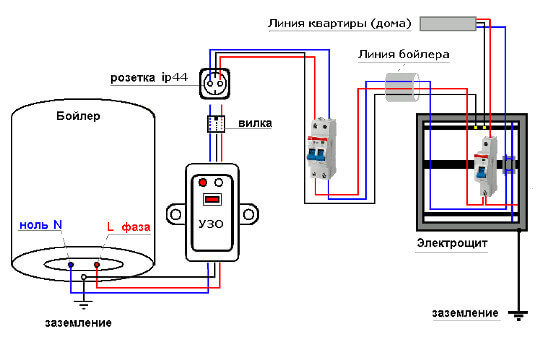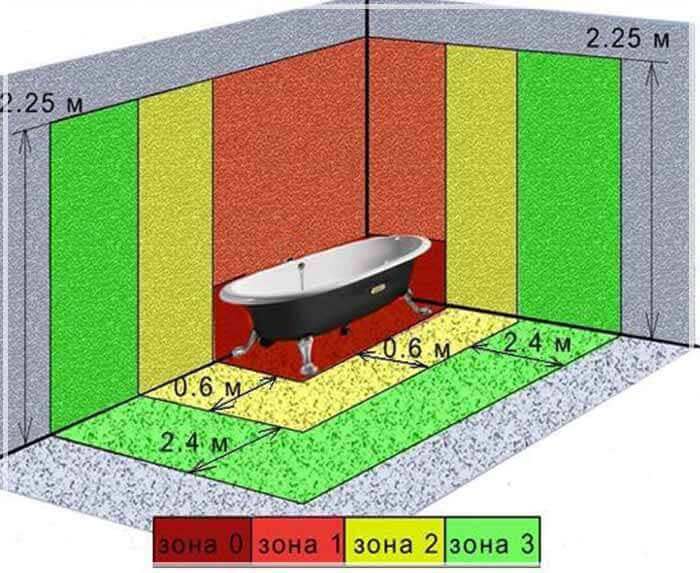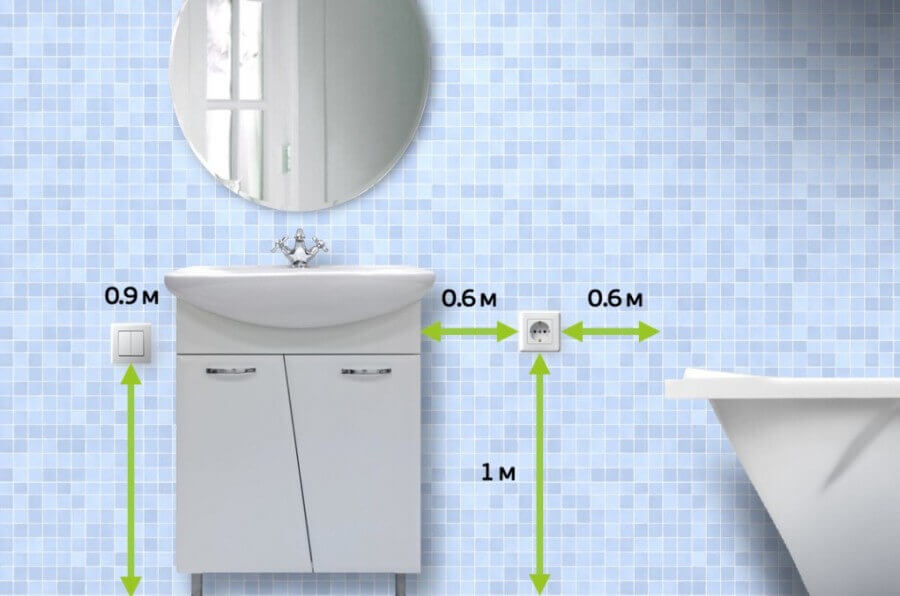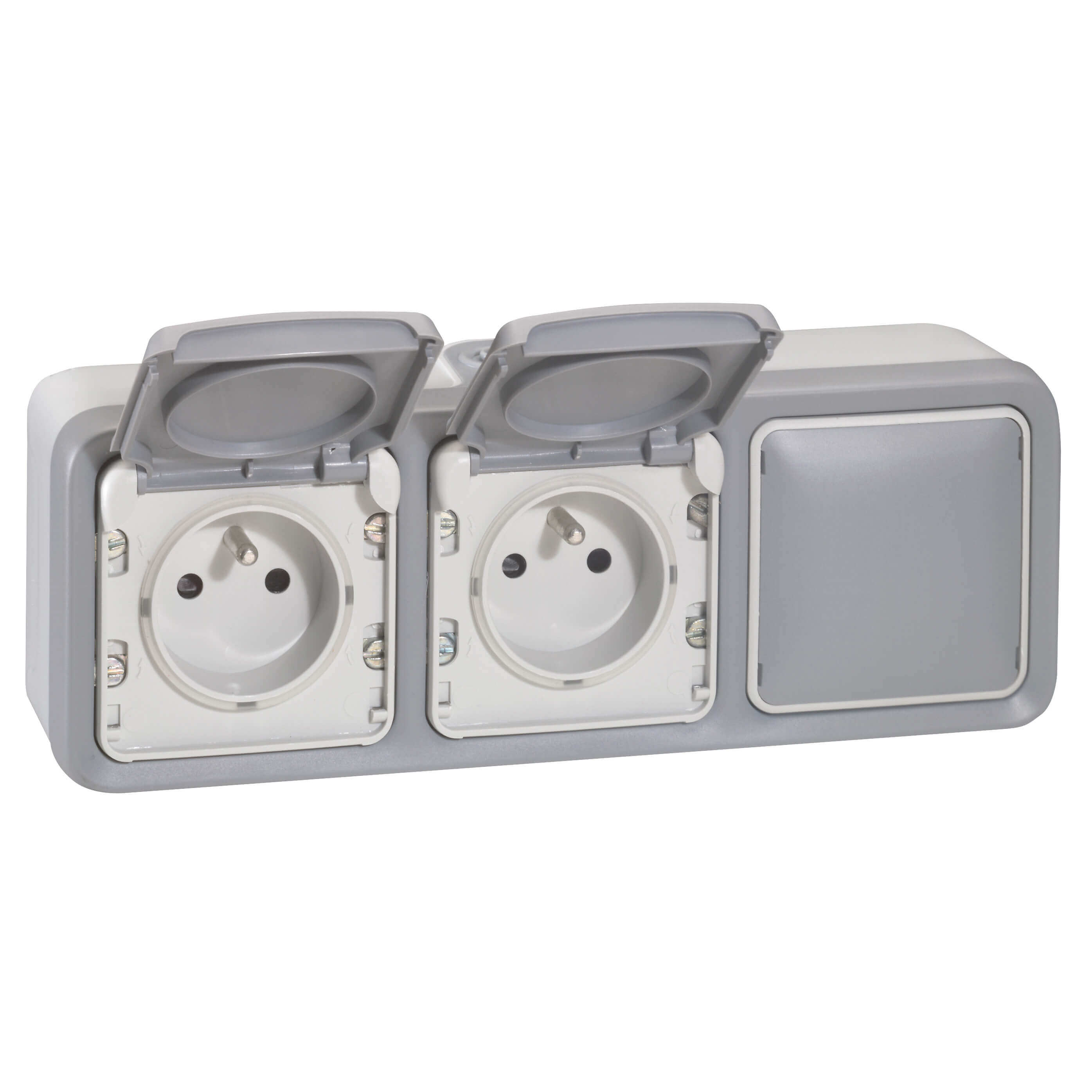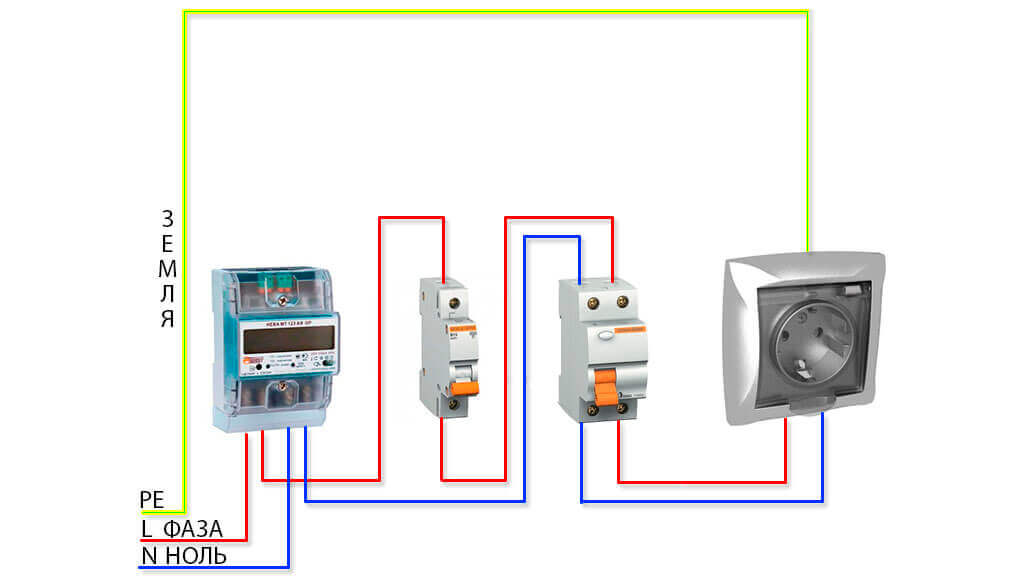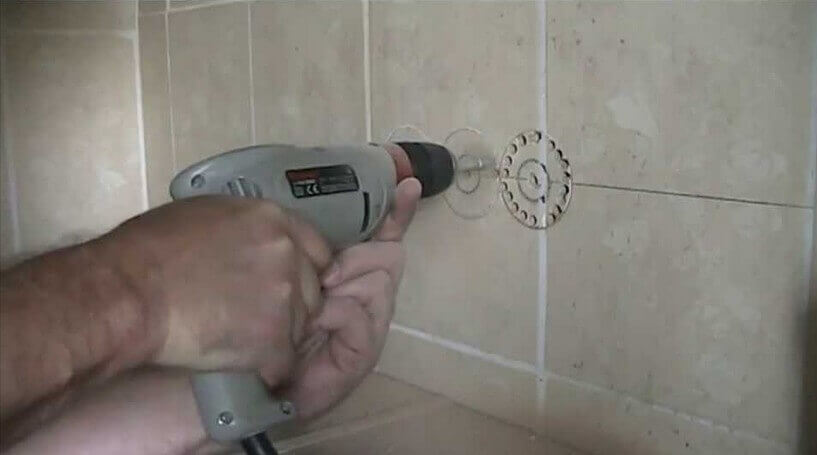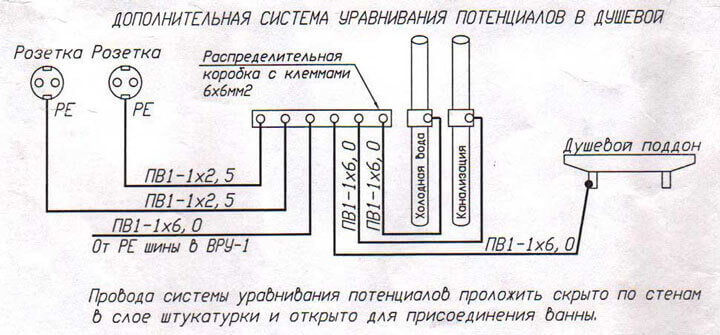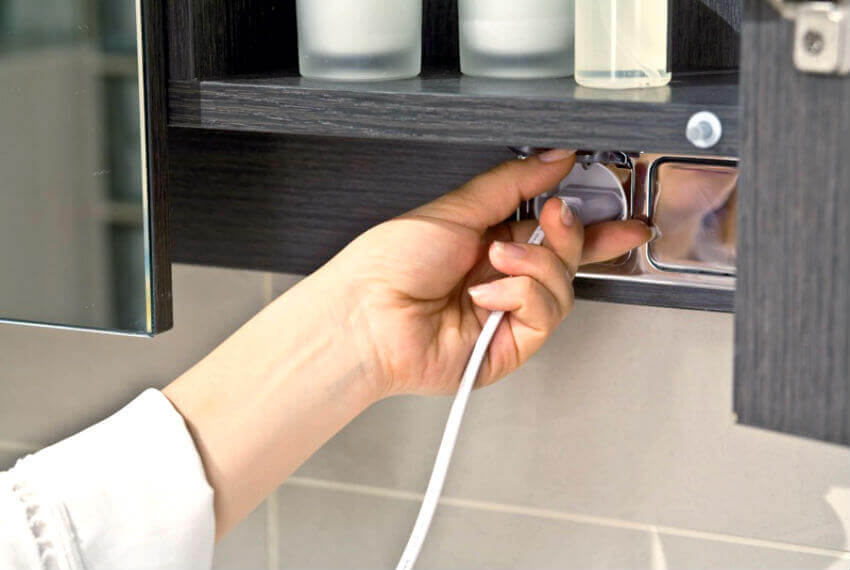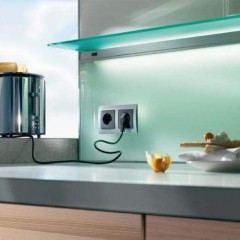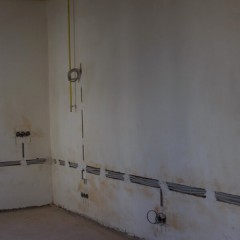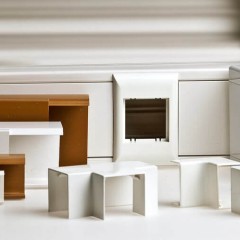Where and how to arrange outlets in the bathroom
What equipment and how to connect
Outlets in the bathroom usually use:
- for connecting a washing machine;
- hair dryer;
- for a razor;
- for illuminated mirrors;
- for a water tank;
- for heated towel rails and more.
Powerful consumers, such as instantaneous water heaters with a capacity of more than 3.5 kW, should be connected to the network directly from a separate machine and through a residual current device (RCD) Or through difavtomat with a tripping current of not more than 30 mA. This is a normalized quantity, and where it is taken from will be described below.
In the figure below you see an example of a connection diagram for an electric heater:
Connecting a heated towel rail to the outlet is not always appropriate and aesthetically pleasing, so it makes sense to connect it directly to the circuit breaker, although its power is usually not as large as that of instantaneous heaters.
How many outlets should there be? If the washing machine is in another room, usually more than 1-2 pieces are not installed, and if the machine in the same room and in addition to it there is a boiler - 3-4 pieces.
PUE requirements and other regulations
The bathroom is divided into zones that indicate the admissibility or inadmissibility of installing electrical equipment in them. The figure below shows briefly schematically these zones and distances to the elements of the bathroom - bathtub, sink, etc. For more information about them, see GOST R 50571.11-96 (IEC 364-7-701-84) Electrical installations of buildings. Part 7. Requirements for special electrical installations. Section 701. Bathrooms and showers.
Electrical safety areas of the bathroom:
- 0 - this is directly where there is water (sink, shower tray, etc.).
- 1 - surrounds the previous area, usually adjacent walls.
- 2 - is located at a distance of 60 cm, and for a shower cabin and similar containers of non-rectangular shape in a radius of 60 cm from the edges of zone 0.
- 3 - conditionally safe. It is located outside the second, that is, more than 60 cm from the washbasins and other things.
You can find a more detailed description in the above GOST. And what do PUE requirements tell us? To do this, we turn to clause PUE 7.1, and consider some excerpts from the text:
7.1.40 describes the requirements for wiring. It states that both open cable routing and hidden wiring. The permissible temperature of their insulation should be at least 170 ° C.
7.1.47 describes the permissibility of installing certain products in the bathroom, in the appropriate areas (the table is compiled from the original text):
| Zone | Security class | What can be used |
| 0 | IPX7 | electrical appliances with voltage up to 12 V, and the power source should be located outside this zone; |
| 1 | IPX5 | water heaters only |
| 2 | IPX4 (IPX5 for public spaces) | water heaters and luminaires of protection class 2 |
| 3 | IPX1 (IPX5 for public spaces) | All the rest |
* Installation of junction boxes, switchgears and control devices is not allowed in zones 0, 1 and 2.
7.1.48 considers the possibility of installing wall outlets in the bathroom in general. It refers to the fact that it is not possible to install power outlets in public showers, but in the bathrooms of apartments or hotel rooms it is possible to install only in 3 zones, according to GOST R 50571.11-96. At the same time, they must be connected through isolation transformers (which is not convenient and expensive in most cases), or through RCDs and diflavomats with a tripping current of not more than 30 mA. Also, wiring products are installed at a distance of not less than 0.6 meters from the doors of the shower cabin.
So, to summarize, where to install the sockets in the bathroom and how to connect in accordance with GOST?
According to the PUE and GOST standards, they must be connected via an RCD with a tripping current of not more than 30 mA, located no closer than 60 cm from the doors of the shower cabin and is located in 3 zones. In this case, the wiring can be hidden and open. Place junction boxes at the same distance, and even better outside the bathroom.
It also follows that the location of electric points is selected only according to the zones. It is not regulated at what height from the floor or what distance from the ceiling is permissible. Install them so that it is convenient to connect and disconnect electrical appliances. Also, consider the possibility of splashing or streams of water on electrical appliances and their connectors for connection - it should be excluded.
This means that the installation of sockets is also prohibited in the washbasin in the bathroom. It is necessary to take them to zone 3, i.e. 60 cm from it, and if it is closer, then it is necessary to use the product with IPx4 protection, that is, with a protective shutter. An excellent example is a series of high-quality overhead wiring products Legrand Plexo:
It is not worthwhile to install even such protected products either above or below the sink, since you cannot foresee where the water will flow if the water supply elements are damaged somewhere. Compliance with the PUE is your safety.
Read more about IP degree of protection you can find out by going to the article to which we referred.
Connection diagram and installation
As was said, the electrical equipment in this room is connected via an RCD. In the ideal case, it will be good if all sockets and devices are connected through a separate machine, but this is not always possible without capital investments and without strobing. The connection diagram is shown below.
Depending on how you can arrange the sockets, either before or after laying the tiles, you will need to upgrade the electrical circuit of the bathroom. You can use overhead or built-in wiring accessories. The quoted PUE does not indicate whether there is a difference in their installation.Therefore, it is permissible to lay external wiring in the bathroom as well as in all others, for example, in cable channels.
Be sure to install the built-in models in the socket inside the wall. There are no special differences in installation, except that you need to make a hole in the tile with increased care so as not to chop it.
To do this, if there is no diamond crown, using a special pen drill for a tile, a series of holes are made in a circle, after which a round piece of tile is chipped and a hole is hollowed out in the main material of the wall.
The video below clearly shows how to install an outlet in the bathroom:
To reduce the risk of electric shock, all live parts (metal) must be connected in a single circuit for potential equalization and grounded.
Conclusion
To summarize and briefly answer the question "where to place and which to choose the outlet for the bathroom." Install them at a distance no closer than 60 centimeters to the sink, shower and so on. In this case, you can use products with protection class IPx1, and if you need to install closer - choose a place so that there is no chance of splashing live parts under voltage. In this case, the socket must be with a protective cover and have a moisture protection class not lower than IPx4.
In addition, you can install sockets in the cabinet, as shown in the photo below:
Finally, we recommend watching a useful video on the topic:
Now you know where and how to install outlets in the bathroom according to the requirements of the EMP. We hope that the recommendations provided were useful to you!
Related materials:

